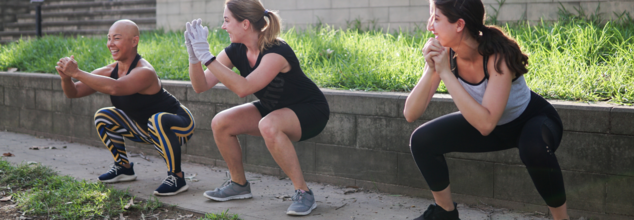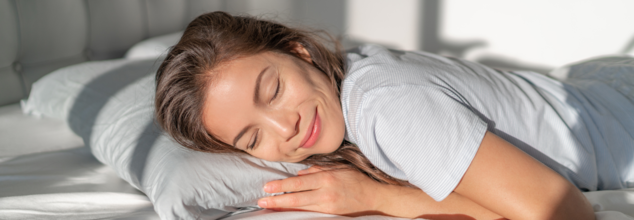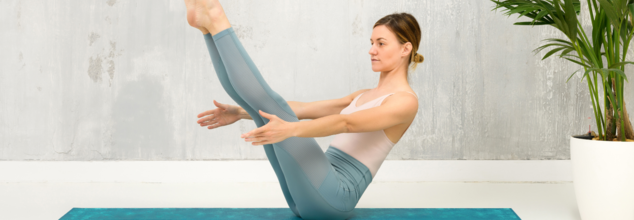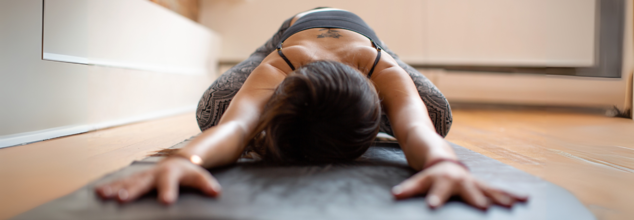- Health Conditions A-Z
- Health & Wellness
- Nutrition
- Fitness
- Health News
- Ayurveda
- Videos
- Medicine A-Z
- Parenting
- Web Stories
These Squats Will Help You Target All Leg Muscles

(Credit-Canva)
Squats have always been part of the priority workout exercise when it is leg day, or cardio day. It is a great way to engage your leg muscles and build your endurance, as you train to hold the ‘squatted’ position with ease. But like every other part of your body, there are many muscles in your leg, and each muscle requires a different type of exercise which will make sure that muscle is engaged and part of the workout.
Most people know that doing squats with a bar on your back is a great way to get strong. It's a classic move used by people who lift weights and athletes. But there are lots of different ways to do squats. Each way your muscles works a little differently. Experts say that doing squats with the bar in front, using a machine, holding a weight in front, or using the bar on your back are all good for your legs. They all work your muscles in different ways. He explained how each one is done and what muscles it helps. Knowing these differences can help you get the best results when you work out. So, let’s look at the four ways he showed us to do squats and what makes each one special.
Front Squat
When you put the bar in front, it changes how you lift. Your legs in the front work harder. This makes your front leg muscles, called quads, stronger. You also need to keep your body straight, so your middle, called your core, gets strong too. If your arms and shoulders are tight, this move helps them get loose. This squat is good if you want strong front legs and a strong middle. It also helps you stand up tall. It's a good way to get your body used to lifting in a new way.
Smith Machine Squat
This machine helps you lift the bar straight up and down. Because the bar moves straight, it's easier to keep your balance. This lets you work your front legs and butt muscles harder. If you're new to squats or if you got hurt, this machine helps you learn how to squat right. You can move down lower without worrying about falling. It also helps you work just the muscles you want. You can focus on building strong legs and butt. This machine makes lifting easy and safe.
Goblet Squat
Holding a weight in front of your chest makes this squat easy. It helps you learn how to squat right. The weight pulls you down, so you go deeper into the squat. This helps your legs and hips move better. Your middle also works to keep you steady. This squat is good for learning how to move and stay strong. It helps you get ready for harder squats. You can focus on moving right and not on heavy weight. It's a simple way to get stronger.
Barbell Back Squat
Putting the bar on your back makes your whole bottom half work. Your butt, back legs, and front legs all get strong. You can lift heavy weight this way. This makes your muscles bigger and stronger. It's important to move right so you don't get hurt. You need to keep your back straight and move slow. This squat helps you get strong for sports and everyday life. It's a basic move for building strong legs and a strong body.
Practicing Yoga Everyday Does THIS To Your Sleep Cycle

(Credit-Canva)
Yoga is a mind-body practice that combines careful movements, focused breathing, and being present in the moment. It started over 3,000 years ago in India and has many different styles, each with its own poses, breathing methods, and meditation.
Yoga has many benefits for your well-being, including better mental and emotional health, reduced stress, relief from some types of pain, weight loss, and improved sleep. This article will focus on how yoga can help you sleep better.
Does Yoga Really Help You Sleep?
According to the Sleep Foundation, more than half of people who practice yoga say their sleep has improved, and over 85% report less stress. Many studies show that yoga can help different groups of people sleep better. These studies usually look at the quality of sleep, not just how much sleep someone gets. That's because getting more sleep doesn't always mean better sleep or feeling good. Good quality sleep usually means feeling energized during the day and not being woken up easily at night.
Yoga and Insomnia
Insomnia means you can't fall asleep or stay asleep. It can lead to feeling sleepy and unfocused during the day, memory problems, and mood changes. Studies show that yoga can be very helpful in managing sleep problems like insomnia. Yoga is especially good for certain groups with insomnia, such as women after menopause and women with breast cancer.
Yoga and Restless Leg Syndrome (RLS)
Restless leg syndrome is an uncomfortable or even painful urge to move your legs. This urge often happens when you're still, like at night. RLS affects more women than men. In a small study of women with RLS, their symptoms got much better after just eight weeks of yoga classes. Their sleep, stress, and mood also improved a lot. While more research is needed, these results suggest that yoga is a helpful tool for improving sleep in people with RLS.
How Often Should You Practice Yoga for Better Sleep?
Doing yoga sometimes will likely help your sleep quality more than not doing it at all. However, people who practice yoga regularly and over a long period tend to get better quality sleep.
If you want to use yoga to improve your sleep, try to make it a regular part of your routine. This could mean going to classes weekly, setting aside a specific time to practice at home, or doing a mix of both. Here are some poses recommended by the Sleep Foundation, doing these poses can help you induce sleep and make you feel rested.
Standing Forward Bend (Uttanasana)
Start standing, then gently fold your body forward over your legs. Let your hands rest wherever comfortable – on your elbows, shins, or the floor. This pose helps calm your mind.
Reclined Butterfly (Supta Baddha Konasana)
Lie on your back, press the bottoms of your feet together, and let your knees gently fall open to the sides. You can keep your arms by your sides or above your head for a gentle stretch.
Legs Up the Wall (Viparita Karani)
Lie on your back and rest your legs straight up against a wall, forming an "L" shape with your body. Keep your arms relaxed at your sides. This pose is very calming and restorative.
Corpse Pose (Savasana)
Often the last pose in a yoga session, lie flat on the floor. Place your arms by your sides with palms facing up, and your legs straight. This pose helps you fully relax your body and mind.
15 Minute Yoga Practice Can Help You Relieve Gas And Bloating

(Credit-Canva)
Yoga is much more than just exercise, it's a practice that truly helps your whole self-feel better. Many people use yoga to ease everyday body aches and pains, but its benefits go even further. Doing yoga regularly can genuinely rejuvenate your energy, making you feel fresh and lively.
For those dealing with uncomfortable bloating and gas, certain yoga poses offer a natural way to find relief, gently helping your digestion. This guide shares simple yet powerful yoga poses made to help you find comfort, boost your energy, and ease those digestive troubles.
Yoga Poses To Relieve Bloating
You can do these poses with or without a yoga mat. Some, like the bridge pose, are gentle stretches that stimulate your internal organs. Twist poses, like the spinal twist, gently massage your abdomen, which can be great for gas, bloating, and even constipation.
Knees Hugged to Chest (Apanasana)
This pose, known as "wind-relieving," can ease gas and bloating. Lie down, hug your knees to your chest on an exhale, and rock gently. Hold for 5-10 breaths. You can also do one leg at a time if that's more comfortable. Repeat as needed.
Spinal Twist
This twist gently massages your belly. Lie on your back, hug your knees, then drop them to the left as you exhale, turning your head right. Extend your right arm out. Hold for 5-10 breaths. Return to center and repeat on the other side.
Bridge Pose (Setu Bandha Sarvangasana)
This pose helps improve blood flow and can energize you. Lie on your back with bent knees, feet flat. Lift your hips towards the ceiling, stretching your chest. Lower your hips back down. Repeat as desired. For a deeper stretch, clasp your hands beneath your back.
One-Legged Seated Spinal Twist
Get more control with this seated twist. Sit with legs extended. Bend your right knee, placing the heel close. Place your right hand behind you. Use your left elbow to twist around your right knee. Hold for 5+ breaths, deepening with each exhale. Switch sides.
Seated Forward Bend Pose (Paschimottanasana)
This simple stretch helps you relax and can improve digestion. Sit with legs straight. Hinge forward from your hips, keeping your back straight, and lower your upper body towards your legs. Hold for 5-10 deep breaths. Go only as far as comfortable for a gentle stretch.
Seated Heart Opener
This pose stretches your belly and may relieve stomach cramps. Sit on your heels, lean back, placing hands behind you (fingers away). Press hands down, lift your chest, and gently arch your back. Feel hips pushing down. Hold for five breaths, then sit up.
Cat and Cow (Marjaryasana and Bitilasana)
Flowing between these poses warms your spine and releases back/neck tension. Start on hands and knees. Inhale for Cow Pose (arch back, lift head/tailbone). Exhale for Cat Pose (round spine, drop head). Connect breath to movement. Repeat several times.
Child's Pose (Balasana)
This resting pose offers a relaxing stretch. Sit on knees with legs wide. Lean forward, stretching arms in front, placing forehead on the floor. Keep your back straight. Hold for five or more breaths. You can use a pillow or block under your head for comfort.
Yoga & Weight Loss - How To Burn Calories With Yoga?

(Credit-Canva)
Many people think of yoga as just gentle stretching and meditation, not a serious workout for burning calories. But the truth might surprise you! While yoga certainly brings mental calm, it's also a powerful way to engage your body.
Yoga is a fantastic blend of strength, flexibility, balance, and endurance. Experts estimate that an hour of yoga can burn anywhere from 180 to 600 calories. This wide range depends on the style; intense types like Bikram or power yoga will burn more than a gentle, restorative class. To maximize calorie, burn, choosing specific poses is key.
Yoga For Weight Loss
Harvard Health suggests that yoga can help you manage stress, lift your mood, reduce emotional eating, and build a supportive community. All these benefits can be incredibly helpful for both losing weight and keeping it off.
Beyond these mind-body benefits, yoga can also help you burn calories and build stronger, more toned muscles. It might even reduce joint pain, making it easier for you to be more active every day. These are just a few of the many ways yoga can support your health journey.
Plank
This pose is a calorie-burning powerhouse because it forces all your muscles to work against gravity. To burn even more, try lifting one foot slightly off the mat. The longer you hold it – from 30 seconds to five minutes – the more calories you'll melt away.
Chair Pose
Chair pose gets your body's largest muscles, the glutes, working hard, which automatically burns lots of calories. It's a safe and effective move for everyone, regardless of their yoga experience.
Chaturanga (Low Push-Up)
Chaturanga is like holding the bottom of a push-up. When done correctly, it engages most of your major muscle groups. Your core, legs, and arms all work to maintain a perfect 90-degree bend in your elbows. It's a challenging pose that requires focus and control, even for advanced yogis.
Wheel Pose
Wheel pose is an advanced backbend that opens your chest and stretches the entire front of your body. It deeply engages your legs, glutes, shoulders, arms, and even your heart and lungs. You can boost your heart rate even more by doing this pose in a heated room after a good warm-up.
High Lunge
You've probably seen High Lunge in other workouts because it's a full-body move, especially effective for your glutes and quads. This pose also builds strength and requires balance. Any time you add balance to a pose, your body has to work harder, leading to more calories burned.
Sun Salutations
Sun Salutations are a sequence of 12 flowing poses that get your heart pumping. They engage your abs, glutes, calves, shoulders, biceps, and triceps. This series combines breath with movement, energizing, strengthening, and stretching your muscles, while also boosting blood oxygen and strengthening your lungs.
Dolphin Pose
Dolphin pose is similar to downward dog but with your forearms on the mat. It's fantastic because it both strengthens your arms, core, and legs, while also stretching your shoulders and chest. Having your forearms down fully engages your triceps too, making it a powerful pose for overall body engagement.
© 2024 Bennett, Coleman & Company Limited

